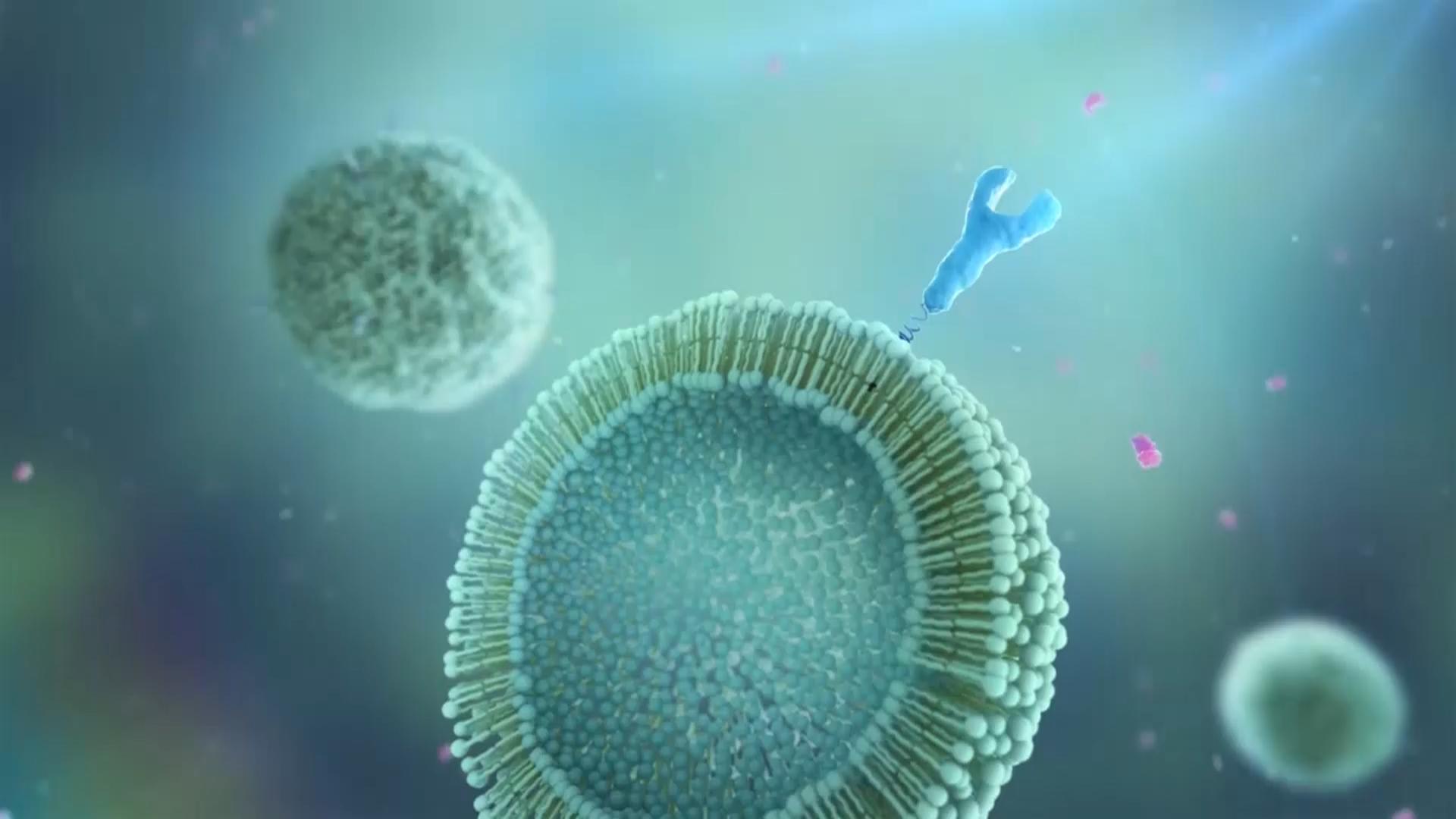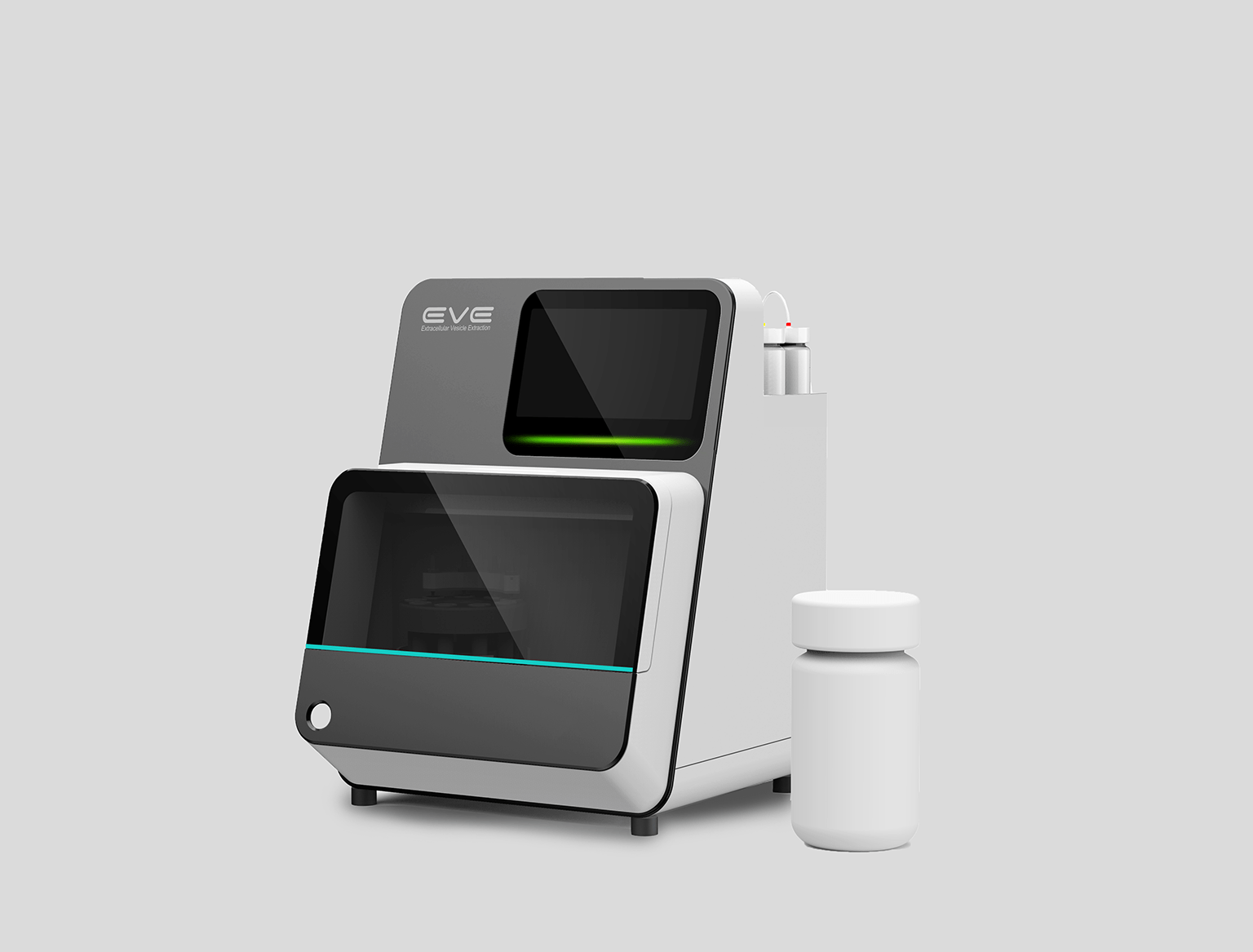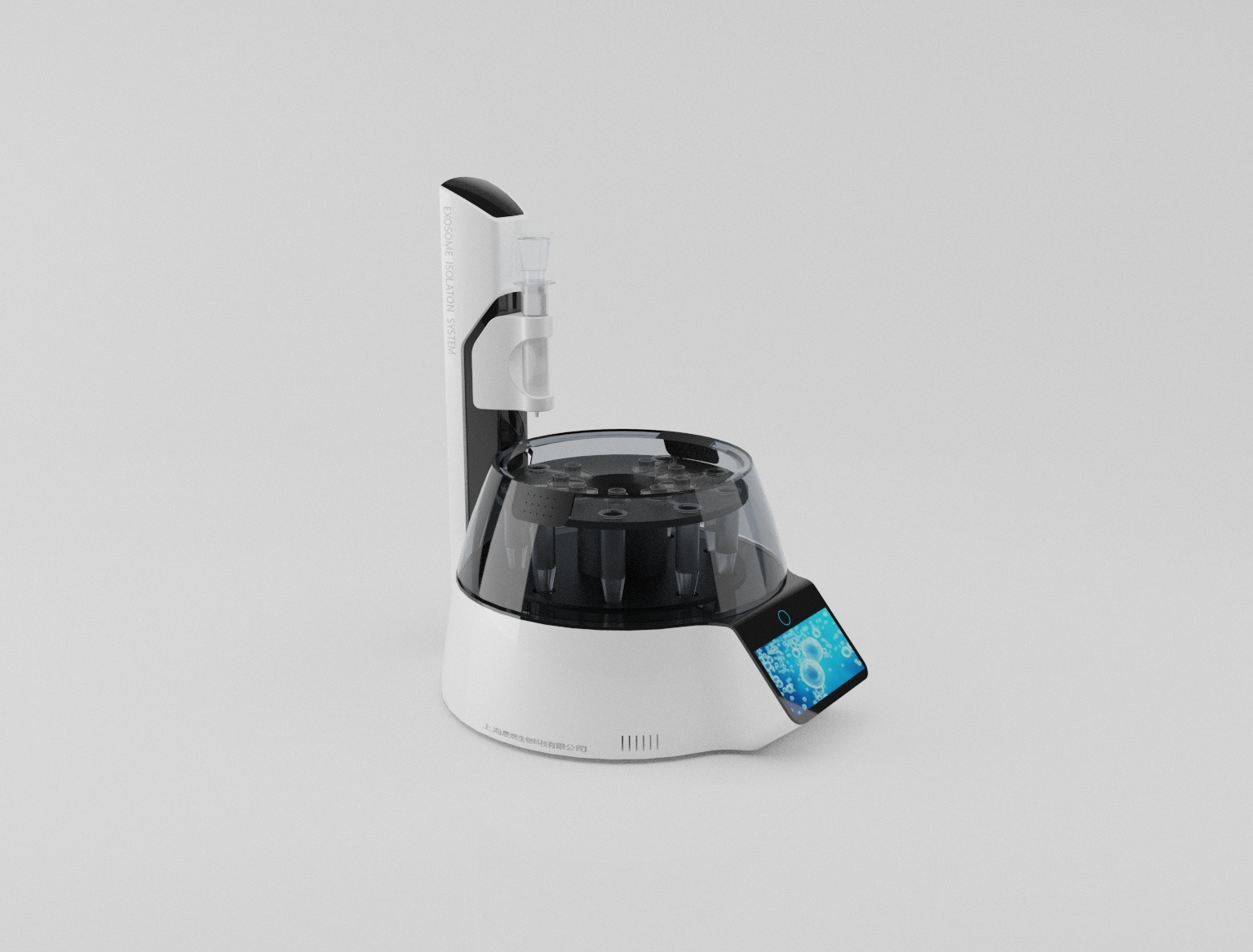What Are Extracellular vesicles ?
Extracellular vesicles (EVs) are lipid bilayer-delimited particles that are naturally released from almost all types of cells but, unlike a cell, cannot replicate. EVs range in diameter from near the size of the smallest physically possible unilamellar liposome (around 20-30 nanometers) to as large as 10 microns or more, although the vast majority of EVs are smaller than 200 nm.

EVs can be divided according to size and synthesis route into exosomes, microvesicles and apoptotic bodies.They carry a cargo of proteins,nucleic acids, lipids, metabolites, and even organelles from the parent cell. EVs carry distinct proteo-transcriptomic signatures that are different from their cancer cell of origin.Most cells that have been studied to date are thought to release EVs, including some archaeal, bacterial, fungal, and plant cells that are surrounded by cell walls. A wide variety of EV subtypes have been proposed, defined variously by size, biogenesis pathway, cargo, cellular source, and function, leading to a historically heterogenous nomenclature including terms like exosomes and ectosomes.
Shengran’s Extracellular Vesicles Technology
SR Bio-Tech is a biotechnology company in China that was among the early pioneers in the development of sEV (small extracellular vesicle) tumor markers for identification, early screening, and prognosis monitoring of tumors through the development of IVD (in vitro diagnostics) reagent kits. From its inception, the company collaborated with renowned clinical experts from top-tier teaching hospitals in China to initiate research on novel markers for liquid biopsy of lung cancer using sEV. The research revealed that sEV miRNA could be utilized for the pathological classification diagnosis of non-small cell lung cancer. The developed diagnostic model demonstrated a sensitivity of 83.33% and specificity of 90.32%. The findings were published in the reputable academic journal Clinical Cancer Research (CCR), marking one of the early reports in China on sEV liquid biopsy markers. Since publication, the research has been frequently cited by peers both domestically and internationally.
Prostatic cancer early diagnosis or prognosis evaluation marker lncRNA malat1 and its application
The present invention relates to prostatic cancer early diagnosis or prognosis evaluation marker lncRNA malat1 and its applications.Marker of the present invention is excretion body source property long-chain non-coding RNA (lncRNA) malat1, it has good indicative function in terms of the early diagnosis of prostate cancer, it can be realized the Non-invasive detection of prostate cancer, and compared with conventional prostate cancer non-invasive detection methods, it is with higher sensitivity and specificity, to clinically avoid carrying out unnecessary aspiration biopsy to the suspicious patient of prostate cancer.In addition, marker of the present invention also has good prediction effect to the prognosis of prostate cancer, be conducive to that the recurrence of patient is instructed to monitor and clinical early intervention.
Prostate cancer diagnosis, grading or prognosis marker, detection reagent or kit, system and application thereof
The invention relates to a prostate cancer diagnosis, grading and/or prognosis marker, a detection reagent or kit, a system and application thereof. The prostate cancer diagnostic marker group comprises the marker group which comprises exosomal GCP2 and exosomal CD63, or GCP2 positive exosome and CD63 positive exosome, has the advantages of high sensitivity and good specificity when diagnosing, grading and/or predicting prostate cancer, and has a good indicating effect on the diagnosis, grading and/or prognosis prediction of prostate cancer.
Ribonucleic acid protective agent, kit, application and storage method
The invention provides a ribonucleic acid protective agent, a kit containing the same, application thereof and a ribonucleic acid storage method, wherein the protective agent comprises a trehalose solution with the concentration of 0.27-1M. The protective agent has long preservation time, insensitivity to temperature and wide use temperature, and the extracellular RNA sample treated by the protective agent does not influence the enzyme activity in cDNA synthesis, PCR reaction and sequencing library construction. The protective agent can efficiently solve the problems of RNA degradation, pollution and the like when the exRNA is stored for a long time or used, and particularly has important significance for the storage, the repeated use and the long-distance transportation of extracellular micro RNA.
It is a kind of for the excretion body source property gene mRNA marker group of prostatic cancer early diagnosis and its application
The present invention relates to a kind of for the excretion body source property gene mRNA marker group of prostatic cancer early diagnosis and its application, and the marker group includes: excretion body source property TXK gene mRNA, excretion body source property ATM gene mRNA, excretion body source property MAX gene mRNA, excretion body source property STK4 gene mRNA, excretion body source property GRK5 gene mRNA, excretion body source property PDGFA gene mRNA, excretion body source property IL32 gene mRNA, excretion body source property RASSF5 gene mRNA and excretion body source property TOX4 gene mRNA.Marker group, reagent/kit, system and application of the present invention can accurately distinguish Prostate Cancer Subjects and non-Prostate Cancer Subjects (including benign prostatic hyperplasis, prostatitis, normal person etc.), sensitivity, specificity and the accuracy for improving prostatic cancer early diagnosis, to avoid clinically unnecessary aspiration biopsy of prostatic gland.
For extracting reagent combination, kit and the method for excretion body
Reagent combination, kit and the method that the invention discloses a kind of for extracting excretion body, are related to field of biomedicine.Reagent combination disclosed by the invention for extracting excretion body comprising: polybrene, polyethylene glycol and glucan.It is combined using the reagent and extracts excretion body, the extraction efficiency and purity of excretion body are higher, a set of reagent, can be suitable for the extraction of serum or blood plasma simultaneously, and easy to operate, not depend on expensive device or reagent consumptive material.
Neuroblastoma organoid culture medium and culture method
The application discloses a neuroblastoma organoid culture medium and a culture method, and relates to the technical field of organoid culture. The culture medium comprises DMEM/F12, penicillin/Streptomycin, glutaMax, NEAA, B-27, N-2, EGF, bFGF, beta-mercaptoethanol and LIF. The culture medium can efficiently and stably establish a neuro-parent organoid model, and can be used for long-term maintenance culture and freezing storage. The culture method can reduce the influence of operators on the success rate of culture results, provides convenience for the construction of a follow-up neuroblastoma organoid model library, and provides an ideal model sample for the follow-up academic research and drug development of neuroblastoma.
Neuroblastoma organoid culture medium and culture method
The application discloses a neuroblastoma organoid culture medium and a culture method, and relates to the technical field of organoid culture. The culture medium comprises DMEM/F12, penicillin/Streptomycin, glutaMax, NEAA, B-27, N-2, EGF, bFGF, beta-mercaptoethanol and LIF. The culture medium can efficiently and stably establish a neuro-parent organoid model, and can be used for long-term maintenance culture and freezing storage. The culture method can reduce the influence of operators on the success rate of culture results, provides convenience for the construction of a follow-up neuroblastoma organoid model library, and provides an ideal model sample for the follow-up academic research and drug development of neuroblastoma.
Neuroblastoma organoid culture medium and culture method
The application discloses a neuroblastoma organoid culture medium and a culture method, and relates to the technical field of organoid culture. The culture medium comprises DMEM/F12, penicillin/Streptomycin, glutaMax, NEAA, B-27, N-2, EGF, bFGF, beta-mercaptoethanol and LIF. The culture medium can efficiently and stably establish a neuro-parent organoid model, and can be used for long-term maintenance culture and freezing storage. The culture method can reduce the influence of operators on the success rate of culture results, provides convenience for the construction of a follow-up neuroblastoma organoid model library, and provides an ideal model sample for the follow-up academic research and drug development of neuroblastoma.
Application of ACTR10 and CA125 combination in ovarian cancer detection and kit
The invention discloses application of ACTR10 and CA125 in combination in ovarian cancer detection and a kit, and relates to the field of medical diagnosis. The invention discloses preparation of a kit for combined use of ACTR10 and CA125 in ovarian cancer auxiliary diagnosis and/or ovarian cancer risk screening, and meanwhile, the sensitivity and specificity of diagnosis are improved, and the effectiveness of ovarian cancer diagnosis is improved to a higher level.
System for early screening, auxiliary diagnosis and/or prognosis monitoring of lung cancer
The invention discloses a system for early screening, auxiliary diagnosis and/or prognosis monitoring of lung cancer, and relates to the technical field of medical diagnosis. The system disclosed by the invention comprises an information acquisition module, a calculation module and a diagnosis module, is used for early screening, auxiliary diagnosis and/or prognosis monitoring of lung cancer and the like, and has higher diagnosis sensitivity and specificity.
Marker and kit for local prostate cancer clinical risk prediction
The invention relates to the field of biomedicine, in particular to a marker and a kit for local prostate cancer clinical risk prediction. The kit comprises primers and probes for quantifying mRNA corresponding to fcn1, il1b, lilrb3, mefv, ppt1, rassf2 and serpina1 genes of extracellular vesicles in a blood sample. The invention applies gene expression profile combination to risk grade grading of localized prostate cancer for the first time. The kit and the marker group for the diagnosis and grading of the localized prostate cancer are provided, so that the grading diagnosis of the prostate cancer can be better realized in a non-invasive way, and the sensitivity, specificity and accuracy of the diagnosis are improved.





